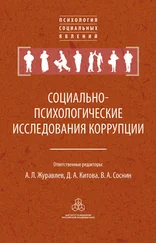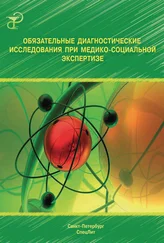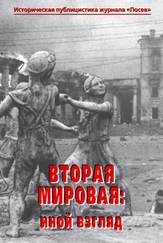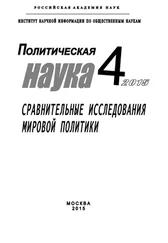Толк. Ин 6.40.206.
Cécile Blanc, Origène: Commentaire sur Saint Jean (5 vols.; SC 157; Paris: Cerf, 1970), 2:286, прим. 3; Raymond G. Clapp, «A Study of the Place-names Gergesa and Bethabara», JBL 26 (1907): 62–83, особ. 79–80 и прим. 61–62; M. J. Lagrange, «Origène, la critique textuelle et la tradition topographique», RB 4 (1895): 502–512, особ. 504–505; Wolfgang Wiefel, «Bethabara jenseits des Jordan (Joh. 1,28)», ZDPV 83 (1967): 72–81, особ. 72–73; Riesner, Bethanien , с. 35 и прим. 77.
G. W. H. Lampe, ed., A Patristic Greek Lexicon (Oxford: Clarendon, 1961), см.: «κατασκευάζω» и «κατασκευή».
Hutton, «Bethany», с. 311.
См., напр.: Fortna, «Locale», с. 67–68; idem, Gospel of Signs , с. 174, 179–180.
См., напр.: Morris M. Faierstein, «Why Do the Scribes Say that Elijah Must Come First?» JBL 100 (1981): 75–86; Dale C. Allison, «Elijah Must Come First», JBL 103 (1984): 256–258; Joseph Fitzmyer, «More about Elijah Coming First», JBL 104 (1985): 295–296; Colin Brown, «What Was John the Baptist Doing?» BBR 7 (1997): 37–49; Brian Francis Byron, «Bethany Across the Jordan or Simply: Across the Jordan», ABR 46 (1998): 36–54; Craig A. Evans, «The Baptism of John in Typological Context», Dimensions of Baptism (ed. S. E. Porter and A. R. Cross; JSNTSup 234; London: Sheffield Academic Press, 2002), с. 45–71
Havrelock, «Jordan River», с. 3.
Название «Фесвия» встречается в Еврейской Библии лишь в форме nisbe в слове (3 Цар 17:1, 21:17, 28; 4 Цар 1:3, 8; 9:36). Первый из этих стихов определяет Илию как «фесвитянина, из жителей Галаадских []». Винфрид Тиль (W. Thiel, «Zur Lage von Tischbe in Gilead» ZDPV 106 (1990): 119–134, см.: с. 119; см. также: Mordechai Cogan, I Kings: A New Translation with Introduction and Commentary [AB 10; New York: Doubleday, 2000], с. 425; ср.: Marvin A. Sweeney, I and II Kings: A Commentary [OTL; Louisville: Westminster John Knox, 2007], с. 210–211; Jerome T. Walsh, 1 Kings [Berit Olam; Collegeville, Minn.: Liturgical Press, 1996], с. 226; John Gray, I and II Kings [2 nded.; OTL; Philadelphia: Westminster, 1970], с. 377 n. a) счел это ошибкой в вокализации оригинального названия Фесвии Галаадской (возможно, в оригинале). Можно сопоставить это название с известным по сочинениям Иосифа Флавия (Фесбона – И. Д. VIII, 13.2) и Евсевия Кесарийского (Ономастикон, № 517), Θεσβά; ср.: с городом, известным под таким же названием (Фисва) в уделе Неффалимовом (Тов 1:2). Наиболее удобные переводы Евсевия: G. S. P. Freeman-Grenville, The Onomasticon by Eusebius of Caesarea: Palestine in the Fourth Century A.D. (Jerusalem: Carta, 2003), с. 59; Eusebius, Onomasticon: The Place Names of Divine Scripture (ed. R. Steven Notley and Ze’ev Safrai; JCP 9; Boston: Brill, 2005), с. 98.
См., напр.: Martin Noth, «Das Land Gilead als Siedlungsgebiet israelitischer Sippen», PJB 37 (1941): 50–101 (репринт в издании: Aufsätze zur biblischen Landes– und Altertumskunde [ed. H. W. Wolff; 2 vols.; Neukirchen-Vluyn: Neukirchener Verlag, 1971], 1:347–390); idem, «Gilead und Gad», ZDPV 75 (1959): 14–73 (repr.: Augsätze , 1:489–583); Roland de Vaux, «Notes d’histoire et de topographie transjordaniennes», Vivre et Penser I: Recherches d’exégèse et d’histoire I (= RB 50; Paris: Gabalda, 1941), с. 16–47, особ. с. 27–29; Siegfried Mittmann, Beiträge zur Siedlungs– und Territorial-geschichte des nördlichen Ostjordanlandes (ADPV 2; Wiesbaden: Harrassowitz, 1970), с. 208–246, особ. с. 212; André Lemaire, «Galaad et Makîr: Remarques sur la tribu de Manassé à l’est du Jourdain», VT 31 (1981): 39–61.
Itinerarium Egeriae 16.1–3; латинский текст см.: Itineraria et alia geographica (СCSL 175; Tournhout: Brepols, 1965), с. 56–57. В этой статье использован перевод: John Wilkinson, Egeria’s Travels to the Holy Land (Warminster: Aris & Phillips, 1981), цит. с. 111.
Обратите внимание на метатезу зубного фрикативного и сибилянта в арабском.
Nelson Glueck, Explorations in Eastern Palestine, vol. 4, pt. 1: Text (AASOR 25–28; New Haven: ASOR, 1951), с. 226.
Там же, с. 226–227. Из описания Глюка создается впечатление, что Мар Ильяс не предполагает более ранней датировки. См. также: Mittmann, Beiträge . Миттман, судя по всему, не считал ни одно из этих мест достаточно древним для включения его в свой обзор.
Mittmann, Beiträge , с. 68–69, № 161; см. также: Wolfgang Zwickel, Eisenzeitliche Ortslagen im Ostjordanland (BTAVO 81; Wiesbaden: Reichert, 1990), с. 280.
Несмотря на то что Джонатан Мабри, Гаэтано Палумбо и Айан Кёйт сначала не смогли подтвердить наличие керамических черепков периода железного века, это позже сделал Палумбо в независимом исследовании. Jonathan Mabry, Gaetano Palumbo, and Ian Kuijt, «Environmental, Economic and Political Constraints on Ancient Settlement Patterns in the Wadi al-Yabis Region», Studies in the History and Archaeology of Jordan IV (ed. A. Hadidi; Amman: Department of Antiquities, 1988): табл. 1, № 70; ср.: Gaetano Palumbo, «The 1990 Wadi el-Yabis Survey Project and Soundings at Khirbet Um el-Hedemus», ADAJ 36 (1992): 25–41, цит. с. 25.
Palumbo, «1990 Wadi el-Yabis Survey», с. 32.
О самом месте и текстологических свидетельствах в его пользу, см.: Erasmus Gass, Die Ortsnamen des Richterbuchs in historischer und redaktioneller Perspektive (ADPV 35; Wiesbaden: Harrassowitz, 2005), с. 287–293; and H.-J. Zobel, «Abel-Mehola», ZDPV 82 (1966): 83–108; также: Yohanan Aharoni, The Land of the Bible: A Historical Geography (trans. Anson Rainey; rev. ed.; Philadelphia: Westminster, 1979), с. 313, 429 (но ср.: с. 284 прим. 222); впрочем, ср.: Glueck, Explorations, с. 215–222.
Zobel, «Abel-Mehola», 98, рис. 2; David A. Dorsey, The Roads and Highways of Ancient Israel (Baltimore: Johns Hopkins University Press, 1991), с. 114.
Читать дальше
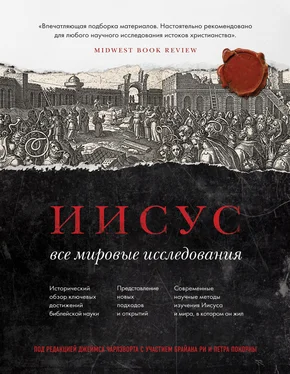
![Коллектив авторов - Что мы думаем о машинах, которые думают [Ведущие мировые ученые об искусственном интеллекте]](/books/31211/kollektiv-avtorov-chto-my-dumaem-o-mashinah-kotorye-thumb.webp)


